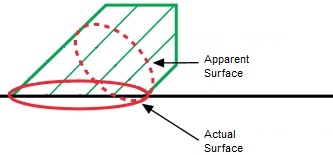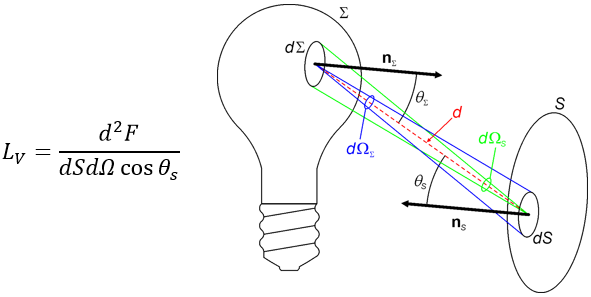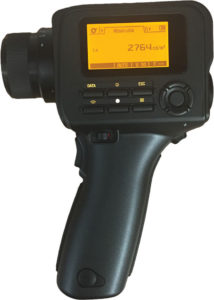Also known as photometric brightness, luminance is the amount of luminous flux incident on, emerging from or passing through a given surface in a given direction. The surface under consideration is generally called the apparent surface, since it is the projection of the real surface on the plane perpendicular to the line of sight.

How is luminance calculated?
The unit of measurement of luminance in the international system is the candela per square meter (cd/m2). We can calculate luminance from the following formula:

Where:
- F is the luminous flux in lumens (lm).
- dS is the surface element considered in square meters (m2).
- dΩ is the solid angle element in steradians (sr) subtended by d∑ from dS.
- θs is the angle between the surface normal S (ns) and the considered direction (d).
- We have to keep in mind that in this case we are considering a lossless medium.
Luminance levels
The human eye can adapt to different luminance levels, but it requires a certain time to adapt to each level variation. This time depends on the abruptness and importance of the change, and whether it is produced by an increase or decrease. If it increases, the adaptation time is shorter than if it decreases, although the change is in the same proportion.
During the adaptation process, vision is seriously affected, perhaps even for several minutes. This is something that must be taken into consideration in workplaces where, for example, a certain activity has to be carried out in a dimly lit environment after having been in a brightly lit one. In these cases, adaptation periods must be established according to each situation, especially in places where there is a risk of accident.
As we have already mentioned on other occasions, under normal conditions, an increase in the amount of light produces an improvement in visual performance. This is true until a certain threshold is reached, beyond which no improvement is perceived even if the luminance continues to increase. This is especially useful when performing detailed or low-contrast work.
Luminance measurement
The luminance meter is used to measure luminance. It consists of a tube containing a light-sensitive element that translates the photometric brightness into an electric current proportional to it.

Depending on the task to be performed on the surface where the measurement is made, a certain angular aperture will be used. The aperture angles will be small for very precise tasks and, for example, a wide angle adapter is used to measure the average luminance of an area.


